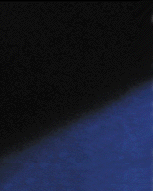|
|
 |
| This Month | Seoul in Breif | Specific Maps of Seoul | |||
| Where to Stay | What to Eat | What to Do | What to See | What to Buy | What to Know |
| Home >> Art & Craft >> Embroidery |
the art of embroidery Some embroidery is so beautiful that it's almost unbelievable it is made by hand. Exquisite embroidery can be designed onto clothes. Definition of embroidery Embroidery means a design stitched onto cloth, by using a needle threaded with string or ribbon. ‘Ja?indicates stitching on the weft or the warp threads, and ‘Su?means embroidering certain shapes by using colorful threads onto the cloth. A design is sometimes stitched by using beads or imitation pearls. History of embroidery The Oriental style of embroidery was introduced from Persia through China to Goryeo, in the period of King Go Jong. The traditional Korean royal wedding clothes, as well as the ceremonial clothes of the King were embroidered with shapes, such as flowers, birds, landscapes and animals. Today, Korean traditional embroidery means embroidery that was made in the period of the Yi dynasty. The simplicity and clear colors used in this style are characteristic of traditional Korean embroidery. However, more modern embroidery using the Occidental style has been developed on a larger scale, which uses more abstract designs along with new techniques and materials. According to an ancient historical book, called ‘Sam Kuk Ji? embroidery was extremely popular in the period of the Three Kingdoms, and embroidery on white clothes was used before this, in the period of Bu Yeo. According to an ancient Japanese document, embroidery was introduced from ‘Baek Jae?to Japan in 430. A Kokuryeo relic, called ‘Cheon Su Kuk Man Dara Su Jang?made by Ka Seo Il, was kept in 'Nakasomiyasa?in Japan, and is considered a Japanese national treasure. Embroidery in the period of Joseon Embroidery played an important role for working women in the Joseon period. The embroidery patterns of this period succeeded that of Koryeo, and there are many relics remaining from that period. The pieces embroidered in the Joseon period are placed into 3 categories according to their use - embroidery made on the articles of Buddhism, embroidery for everyday life and embroidery pieces used for appreciation. For the Buddhism pieces, the embroidery that was made in the earlier Joseon period was made using thin thread, whilst the pieces made in the latter period were embroidered with thick thread. As for everyday embroidery, dignity and status was displayed in the embroidery on garments such as robes. Finally, landscapes, flowers and birds were embroidered onto folding screens to show a general appreciation of the art. An embroidered folding screen, called ‘Cho Chung Do?and made by ‘Shin Sa Im Dang?is in safekeeping in the university of Dong A. Characteristics of traditional Korean embroidery In general, traditional Korean embroidery was stitched onto silk cloth, using silk threads such as gold or silver. Embroidery with an Oriental design, displaying pictures of nature, were used for everyday decoration ?this appears feminine and fine. In contrast, the Occidental style of embroidery with abstract or partially abstract designs were decorated on the cotton or hemp cloth, using cotton or rayon threads. The oriental styles of embroidery were decorated in a very delicate way, using a thin needle about 3cm in length, and the elegant embroidery pieces were mounted in frames and put up on the wall. Embroidery designs Embroidery designs vary according to the function of the piece: Patterns denoting nature, earth Patterns displaying clouds, the sun, the moon, rainbows, waves, stars, mountains and rivers Plant patterns Patterns such as the Four Gracious plants, peony, lotus and pomegranate etc., were often embroidered. Animal patterns Patterns featuring red-crested white cranes, bats, butterflies, tigers, mandarin ducks, peacocks, deer, tortoise and so on were used in traditional Korean embroidery designs Imaginary animal patterns Imaginary animal patterns such as dragons were used in oriental styles of embroidery pieces Imaginary plants Imaginary plant patterns, such as the herb of eternal youth, were used for the decoration of some embroidery pieces Patterns of happy events Words describing best wishes for happy events were also used in embroidery |
 |
| Copyright ¨Ï 2001 What's On Communications Inc. All rights reserved. Write to Us post@whatsonkorea.com. |